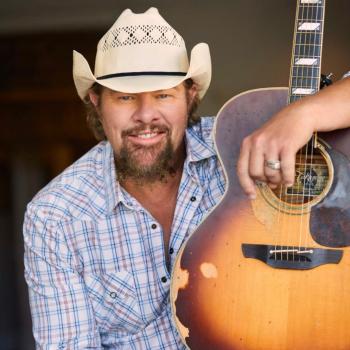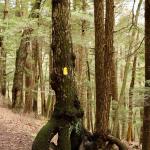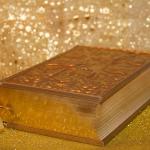Watching on television the finishing nine holes today in the Northern Trust Open at Riviera Country Club in Santa Monica, California, so many pros missed putts on the ocean side of the hole. I think if they would have plumb-bobbed their putts, they wouldn’t have been fooled by the tilted ground on which they were golfing their ball.
The picturesque Riviera County Club lies in the Santa Monica Canyon that gradually slopes straight down to the blue Pacific Ocean, only two miles away. So, the course is built on a slope. Whenever a golfer plays such a course, you feel like you are standing on a flat piece of real estate when you are actually on tilted ground. It’s an optical illusion. Because of it, you’ve got to be careful in reading those greens. But it can be of no use to try to be careful about it. It seems like your eyes play tricks on you. So many golfers, even pros, get frustrated misreading greens on sloping golf courses.
Because of that, in the last few years of my career on the regular PGA Tour and my entire career on its Senior/Champions Tour, I usually used the plumb-bob method of reading greens. I think I got most convinced about it by playing with the easy-going, unflappable, and cordial “Mr. 59,” Al Geiberger, and constantly watching him plum-bob and make a lot of putts.
What is plumb-bob green reading? That’s where you stand behind your ball on the green on your line from the ball to the hole, hold the grip-end of your putter up with one or two hands (two hands is better), extend your arm or arms straight out at shoulder height, and let the club shaft dangle like a carpenter’s plumb line, thus with its clubhead hanging at the bottom. To get the proper plumb depends on the construction of your putter. Most putters have an offset hozel or the clubface is about even with the club shaft and the center-of-gravity of the mallet clubhead is on one side of the shaft. Either way, you usually have to turn the face of your putter a certain amount to an “open-face” position to cancel the offset of the putter hozel or the center-of-gravity of the mallet clubhead. Then you close one eye and look with your other eye at one side of the putter club shaft as you postion it over the middle of your ball. Then you look up to see where the hole is in relationship to that same one side of the club shaft. If that side of the club shaft is on the right side of the hole, then your putt breaks right-to-left. Of course, if that side of your club shaft is on the left side of the hole, your putt breaks left-to-right.
Which eye do you close and thus which eye do you keep open and viewing with. That depends on your dominant eye. Supposedly, everyone has a dominant eye. They say your dominant eye is usually determined by whether you are left-handed or right-handed. So, you plumb bob with your dominant eye. How do you determine which is your dominant eye? Heh, this stuff is already complicated enough. If you don’t know how to tell which is your dominant eye, go get an appointment with an optometrist and ask that doc. But guess what. I’ve asked some of them and they’ve just laughed at me, as if who cares. You shoudl be able to find out which is your dominant eye. I always say, when in doubt, go to the Internet. However, we all know you can’t believe everything you find out there.
The distance that the hole is to one side or the other of the club shaft when plumb-bobbing is always determined by how much the ground is tilted on which you are standing. Since your putt will cover ground that you are not standing on, the plumb bob read is really giving you information about the land on which you are standing, not the land between your ball and the hole. Usually, they are not any different. But because of this, it is often wise to also do the same plumb bobbing from the opposite side of the hole. Then you take the average between the two reads. The amount of break you play on the putt depends on the speed of the green and the distance of your putt. That’s something you just have to get used to with practice in order to tell whether or not you aim the exact number of inches to the right or left of the hole for the putt’s break that the plumb-bob is telling you. That is, if that side of the club shaft aligns three inches to one side of the hole, then that often is how much break you play. But if the greens are fast and you have a long putt, you’ll have to allow for more break than that.
One other thing: be aware of your speed of play when plumb-bobbing. On the PGA Tour, from the time that it is your turn to play, you’ve got forty seconds to hit your ball. If you go beyond that, you are breaking the slow play rule and therefore subject to a fine and after multiple infractions a stroke penalty. But nowadays on Tour, it looks to me that they are not enforcing the slow play rule like they used to. The Tour has always gone through phases in which they enforce that rule and then get very lax about it.
I used to teach plumb-bob green reading in my golf schools during the 1980s. It takes some practice to learn and get right. You have to be persistent with it. Lots of golfers just give up trying because they don’t learn it right. But persistence in plumb-bobbing pays off, especially when you play golf courses like Riviera Country Club or in the mountains where a golf course in on the side of a mountain.
I played many years in the Los Angeles Open at Riviera Country Club on the regular PGA Tour. And I never could putt those greens and therefore did not do well there. Because of it, in 1979 I decided not to have a regular Tour caddy but get a local caddy. I asked the pro in the pro shop who was the best local caddy at reading the greens there who wanted to caddy in the tournament. It turned out that he was a teenager. I never had my caddies read greens, but I did that week. Partly because of it, I was leading the tournament by one stroke in the last round up to the par three fourteenth hole. I was paired with the eventual winner, Lannie Watkins. I three-putted that green, but not due to a misread. I finished alone at third place, two strokes behind Lannie. I think it was soon after that year that I began to plumb-bob. Years later, throughout my entire career on the Senior/Champions Tour, I almost always plumb-bobbed. I am surpised that I don’t see hardly anyone on the regular Tour nowadays, especially at golf courses like Riviera, plumb-bobbing their putts. Heh, if its good enough for carpenters, who can always look at a building or such and know whether or not it is “in plumb,” it’s good enough for me. I come from a family of carpenters. I wish I would have done like Zarley carpenters and plumb-bobbed my putts all of my career as a pro golfer.















